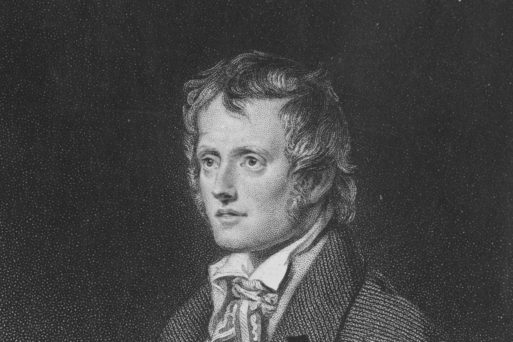
The Dying Child
He could not die when trees were green,For he loved the time too well.His little hands, when flowers were seen,Were held for the bluebell,As he was carried o’er the green.His eye glanced at the white-nosed bee;He knew those children of the spring:When he was well and on the leaHe held one in his hands to sing,Which filled his heart with glee.Infants, the children of the spring!How can an infant dieWhen butterflies are on the wing,Green grass, and such a sky?How can they die at spring?He held his hands for daisies white,And then for violets blue,And took them all to bed at nightThat in the green fields grew,As childhood’s sweet delight.And then he shut his little eyes,And flowers would notice not;Birds’ nests and eggs caused no surprise,He now no blossoms got;They met with plaintive sighs.When winter came and blasts did sigh,And bare were plain and tree,As he for ease in bed did lieHis soul seemed with the free,He died so quietly.

John Clare is the “quintessential Romantic poet,” who often focused his writing on the natural word and rural living. In “The Dying Child,” Clare’s signature penchant for nature shines through as he believes the child “could not die when trees were green.” The poet believed the boy loved spring too well to leave such beauty during the season.
Clare speaks of flowers, butterflies, green fields — all lovely natural wonders to behold. These precious gifts of nature are synonymous with a child’s innocence and beauty. The boy took hold of all the flowers, full of color, and took them to bed with him, desiring to hold on to them forever.
However, Clare writes that once winter with its blast of ice came, the boy could breathe his last. There were no more blossoms or signs of vitality outside to sustain him. Clare ends with the lines, “His soul seemed with the free / He died so quietly.” Only in the season that symbolizes death could the boy give up his life.
Certainly, Clare lives up to his title of Romantic poet as this poem is an incredibly romanticized version of losing a child. Grieving parents may not be able to accept Clare’s picturesque scene of a child taking their final breath. However, there may be a time after the initial pain of grief where a parent may final solace in Clare’s imagery, believing their child to visit them in springtime. Perhaps they can see their child in the first bloom of the season each year.

 “The Dying Child” by John Clare
“The Dying Child” by John Clare


 “Songbird” by Fleetwood Mac
“Songbird” by Fleetwood Mac
 First the Wealth Gap, Now the U.S. Has a Growing Health Gap
First the Wealth Gap, Now the U.S. Has a Growing Health Gap
 How to Comfort A Dying Loved One
How to Comfort A Dying Loved One














